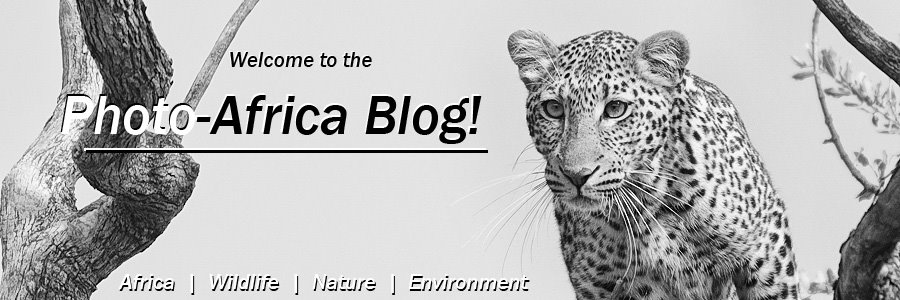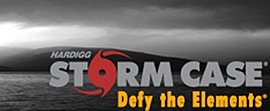Africa is a place that touches your soul. You get addicted to the savage beauty of the wild land that shows us a small, unspoiled bit of the earth as it used to be a long time ago.
To have the privilege of capturing the aesthetic wonders is an amazing experience and something I would recommend to anybody who loves nature. Who loves photography. Actually... I would recommend it to anybody. Full stop!
When I looked through the new images that was uploaded to the Photo-Africa Stock Library this week, I was amazed at the amount of different photographic angles one could approach Africa from. Obviously lions and the other Big Five will always be a focus for anybody visiting Africa but there is so much more. Small things. Abstract things.
Short of going into the ecology versus tourism debate, we have to recognize that there is obviously an interaction between humans and nature. We go out into the wild to search out the Big Five. The Small Five. And I have even heard of the Ugly Five! Whatever your sought after prize out in the field, we cannot deny that when we are out there we are linked to nature. We have built lodges. We drive and walk in the field. We sit and watch the ageless story unfold.
Stopping the philosophical road where that whole chain of thought could lead (perhaps more on that in a later Blog), humans in nature also creates great photographic moments waiting to be captured.
So for the first time, this week I have included images that show humans, or their impact, on nature.
Image 1 - Wooden Moon by Warren David Diack
Image 2 - Southern Pale Chanting Goshawk by Grant Marcus
 I admire bird photography. If you have ever tried it I suppose you will as well. It is not all that often that you find a beauty like this sitting still with a perfectly blue background. The bird is sharp and, as a bonus, Grant was able to capture that little bit of catch-light in the eye which gives any wildlife image that little sparkle of life. The diagonal branch leads your eye to the bird and he is staring off into the open right side of the frame. Great capture.
I admire bird photography. If you have ever tried it I suppose you will as well. It is not all that often that you find a beauty like this sitting still with a perfectly blue background. The bird is sharp and, as a bonus, Grant was able to capture that little bit of catch-light in the eye which gives any wildlife image that little sparkle of life. The diagonal branch leads your eye to the bird and he is staring off into the open right side of the frame. Great capture.Image 3 - Processionary Worms by Johann Marais
 Another great example of photographing the small things. Initially you have to look very closely to figure out what the image is all about which, to me, is a sign of an 'interesting' image. To give you a better understanding of this image, here is some details on the Processionary Worms seen in the image.
Another great example of photographing the small things. Initially you have to look very closely to figure out what the image is all about which, to me, is a sign of an 'interesting' image. To give you a better understanding of this image, here is some details on the Processionary Worms seen in the image.These are members of the family Thaumetopoeidae (Processionary worms). There are nine species in
The caterpillars form long "trains" when moving between food sources. They walk touching the one in front and will stop abruptly when one looses contact with the one in front. These groups can be up to 600 strong, but is usually a lot less. There are two beliefs about the strange walking-in-line behavior. The first has to do with finding food. Each caterpillar leaves a strong strand of silk behind them and those that follow walk along the line of silk. They literally are creating a silk ‘road’ that helps keep the line together. The second one is, as you might have guessed, is to deter possible predators. (I.e. the group looks bigger and more dangerous than an individual.)
When pupating they spin a silk envelope over the entire group. In this each larvae spin its own cocoon. You often see this spongy mass in hidden corners. Once they emerge form their cocoon, the highly attractive adult moths is short lived.
So you see. An image of quite a unique natural wonder!
Image 4 - Night Drive by Craig Muller
I absolutely love this image which, to me, is another great humans in nature image. An 'action' image of a night drive in a game reserve in South Africa. For those of you who have not been on safari yet, the image shows the tracker sitting on the front left of the vehicle which is moving through the African bush. You definitely get the idea of movement through the blurring of the road but if you look closely you can just make out the branches on the trees on the side of the road. Awesome image and on of those that makes me very excited to get back to the bush next week!!
* * *
Image 5 - Buffalo Sunset by Matt Jones
Image 6 - Flying Beauty by Craig Muller
 Amazing shot. A perfect example of how to fill the frame with your subject. The chopped off wing does not bother me as it gives you an idea of the size and action of the image. Like I mentioned earlier photographing birds is not easy but to capture them like this, in flight, is truly spectacular! Could be really really picky and go into color balance and the white rim around the edges but not going to. I reckon this is a marvelous, eye-catching image.
Amazing shot. A perfect example of how to fill the frame with your subject. The chopped off wing does not bother me as it gives you an idea of the size and action of the image. Like I mentioned earlier photographing birds is not easy but to capture them like this, in flight, is truly spectacular! Could be really really picky and go into color balance and the white rim around the edges but not going to. I reckon this is a marvelous, eye-catching image.After looking through all the images I reckon I am going to go with the last image as my pick of the week. It found it very difficult to choose one as all these images are very striking in their own right. The first image was also a serious consideration but I think I will stick to Image 6 as my favorite. (Yes, I admire bird photography!) Would love to hear which image you prefer and why! Always interesting to get feedback on what other photographers / guides / people think of an image!
Right, before I end of please indulge me for just a minute for a bit of digital fun!
When I was looking through the newest images in Photo-Africa I saw this one by Grant.
 Now I was viewing them as small thumbnails and I originally thought that this was the most amazing piece of artistic composition!! I thought that, when viewing it as small thumbnail, that the male lion's eye was also open thereby almost creating a single lions's face. (Make sense??)
Now I was viewing them as small thumbnails and I originally thought that this was the most amazing piece of artistic composition!! I thought that, when viewing it as small thumbnail, that the male lion's eye was also open thereby almost creating a single lions's face. (Make sense??)I took about 3 seconds and used Photoshop to double the females eye to get the image closer to what I thought I saw should the male have obliged and opened his eye when the shutter was triggered! (Yes I am slightly bored and can't wait to get back to Madikwe!)
 Can you see what I was (almost) getting excited about? :)
Can you see what I was (almost) getting excited about? :)Somewhere in between my very bad attempt at editing the image and Grant's original lies a lesson in composition & photography. By thinking out of the box when shooting wildlife you have the possibility of coming up with the most weird and wonderful 'abstract' images. True, you cannot always plan an image like this but don't dismiss an image that does not conform to your idea of a 'perfect image'. Look at the images when you get back home or, in this case, the lodge and then decide whether to delete it or not. Perhaps you can use it as an abstract, such as with motion blurred images.
Alternatively, if this is your kind of thing and you want to spend a lot of time on the computer, you could use Photoshop to blur the background which includes the male lion, so that the female has more punch. This can start another line of thought concerning the editing of wildlife images but not going there for now. I still believe the less you do afterwards, the better. Use the camera to do the work!
Bottom line - never never never delete images while you are in the field no matter what they look like on the small screen on the back of your camera! Look at them on your pc first!!!
Anyway, enough of that. :)
As always I look forward to hearing your thoughts on this week's Hight Five!
Until next time!
Gerry
.jpg)





















2 comments:
Wonderful information and pictures again Gerry. I really do enjoy coming to see what you will post next. :)
Another stunning set of shots this week Gerry and great variety this time, some unusual some classic but all great.
Post a Comment